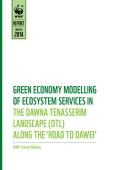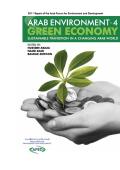The "Guidelines for developing eco-efficient and socially inclusive infrastructure" provide practical tools for city planners and decision makers to reform urban planning and infrastructure design according to the principles of eco-efficiency and social inclusiveness. The guidelines build on knowledge accrued and lessons learned though case studies and pilot projects conducted in cities across Asia and Latin America. It is based on the recognized need for an urgent shift in the way urban infrastructure is planned, designed and managed in order to respond to the challenges posed by rapid urbanization, globalization and climate change. The guidelines contain sections on: the importance of building urban infrastructure in an eco-efficient and inclusive way; what strategies planners can use to facilitate eco-efficient and inclusive outcomes; how they should be integrated in a strategic planning cycle; and who is making the change based on best practices examples from Singapore, Republic of Korea, Sri Lanka, Colombia, Philippines, Japan, Tajikistan and Chile.
As cities are growing in terms of population and physical size, their contributions to national GDP are also increasing due to increased economic activities in urban areas. With this greater role of the urban sector, the demand for urban transportation – passenger and freight has increased many folds in the recent years. With the growth or urban economies, the living conditions and lifestyles of the city people are also changing. As income of the upper and middle class people in the city is increasing, the ownership of private vehicles is increasing rapidly. The Asian cities which do not have any growth management plan for controlling this rapid increase in personal vehicles are experiencing severe traffic congestion and other problems including air pollution, loss of personal and corporate productivity, high cost of transport and poor quality of life. Traffic congestion and air pollution have a negative impact on GDP as it imposes a significant cost in terms of both health and productivity. The traditional way of solving traffic congestion is to increase capacity of the road network.

This report describes a pilot project to design an integrated framework to inform and support land use planning. It analyses interaction of social, economic and environmental factors in shaping future land use needs through a transparent system dynamics simulation model and generates projections up to 2035 to analyse the short, medium and longer-term consequences of road construction on society and land use in the DTL, along the ‘Road to Dawei’. The aim is to allow policymakers, land use planners and other interested stakeholder to test the multi-dimensional impact of green economy interventions aimed at improving sustainability in the area. Results are communicated in biophysical and economic terms, also including the valuation of natural capital (stocks, flows and ecosystem services). Though still in initial stages of development, this study has already helped understanding the key drivers of change in the area, identifying data collection needs, and defining their use to carry out a green economy analysis.
Gasoline and diesel fuel are heavily taxed in many developed and some emerging and developing countries. Outside of the United States and Europe, however, there has been little attempt to quantify the external costs of vehicle use, so policymakers lack guidance on whether prevailing tax rates are economically efficient. This paper develops a general approach for estimating motor vehicle externalities, and hence corrective taxes on gasoline and diesel, based on pooling local data with extrapolations from U.S.evidence. The analysis is illustrated for the case of Chile, though it could be applied to other countries.

